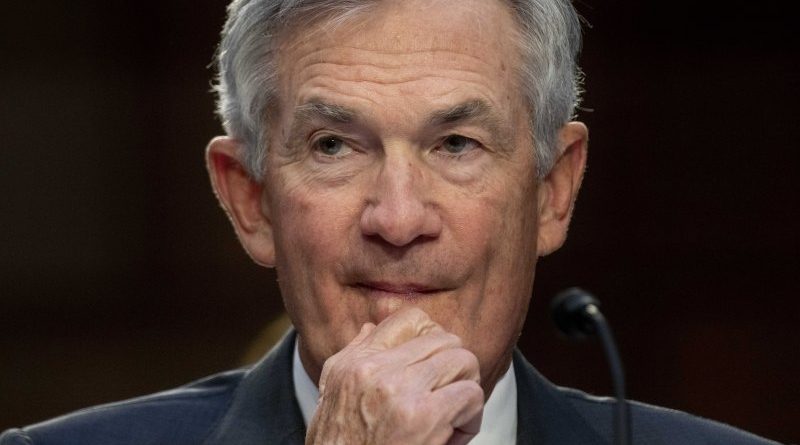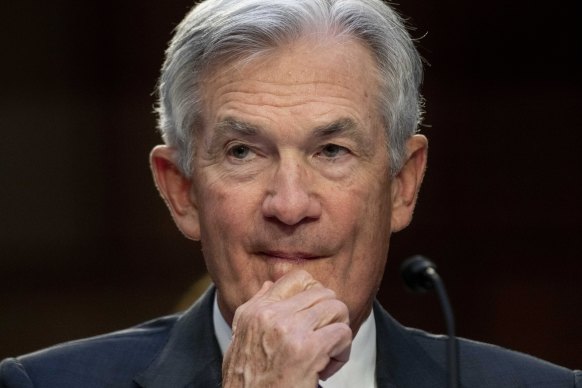Bank turmoil led Fed officials to forecast fewer rate hikes
Save articles for later
Add articles to your saved list and come back to them any time.
Turmoil in the banking system after two major US banks collapsed led many Federal Reserve officials to envision fewer rate increases this year out of concern that banks will reduce their lending and weaken the world’s largest economy.
The heightened uncertainty surrounding the banking sector also helped Fed officials coalesce around their decision to raise their benchmark rate by just a quarter-point, rather than a half-point, at their meeting March 21-22, according to the meeting minutes.
The Fed also revealed on Wednesday that its staff economists have forecast that a pullback in bank lending will cause a “mild recession” starting later this year. That is a shift from their previous estimates, which had predicted that the economy would eke out positive growth this year. If the impact of the banking turmoil ends up being less than economists’ forecasts, a recession might be avoided, the minutes suggested.
The recent banking troubles have injected significant uncertainty into the Fed’s decision-making, its latest minutes reveal.Credit: AP
Overall, the minutes showed that the banking troubles have injected significant uncertainty into the Fed’s decision-making and reversed an emerging trend to keep raising rates aggressively to quell inflation. At their meeting last month, Fed officials projected that they will raise their benchmark short-term rate — which affects many consumer and business loans — just once more this year, in May.
Fed officials who spoke this week have also emphasised the importance of monitoring bank lending. There are already reports of small companies struggling to obtain loans, though it’s not yet clear how widespread the impact will be.
Before the collapse of Silicon Valley Bank, many Fed officials had said they expected to forecast more than one additional hike this year because economic and inflation data showed that they still had more to do to control the pace of price increases. But according to the minutes of last month’s meeting, Fed officials agreed that the collapse of the two large banks “would likely lead to some weakening of credit conditions,” as banks sought to preserve capital by curtailing lending to consumers and businesses.
Several officials said they had considered supporting leaving rates unchanged at last month’s meeting. But they added that actions by the Fed, the Treasury Department and the Federal Deposit Insurance Corp to protect depositors had “helped calm conditions” in banking and reduced the risks to the economy in the short run.
Some other officials said they had favoured a half-point hike last month because hiring, consumer spending, and inflation data still pointed to a hot economy. But given the uncertainty resulting from the banking troubles, they “judged it prudent” to implement a smaller quarter-point increase.
Also on Wednesday, the US government’s latest inflation data showed that price increases are slowing but remain far above the Fed’s 2 per cent inflation target, making another quarter-point rise in its benchmark rate highly likely at its meeting next month.
Consumer prices were up 5 per cent in March compared with year ago, much less than the 6 per cent year-over-year increase in February. But excluding volatile food and energy costs, core inflation ticked higher — from 5.5 per cent to 5.6 per cent. Economists consider core prices a better read on underlying inflation.
Fed officials who have spoken this week have suggested that they will need to raise their key short-term rate for a 10th time in May. Economists outside the Fed increasingly expect the Fed to pause its rate hikes after that.
Mary Daly, president of the Federal Reserve Bank of San Francisco, said on Wednesday that the March inflation report was “good news” but that price increases are “still elevated.”
“The strength of the economy and the elevated readings on inflation,” Daly said, “suggest that there is more work to do.”
Yet she also suggested that the Fed’s forthcoming rate decisions will hinge, in part, on how severely banks restrain lending.
“How much does that put the brakes on the economy so that we don’t have to tighten more?” Daly asked. “We don’t know the answer, but it’s one of the things we’ll focus on.”
AP
The Business Briefing newsletter delivers major stories, exclusive coverage and expert opinion. Sign up to get it every weekday morning.
Most Viewed in Business
From our partners
Source: Read Full Article


